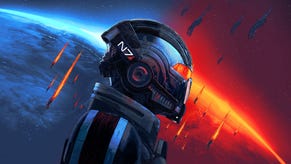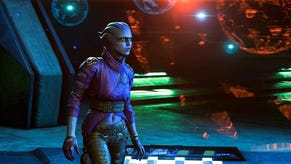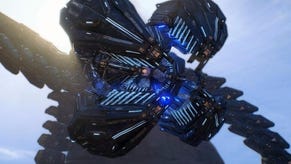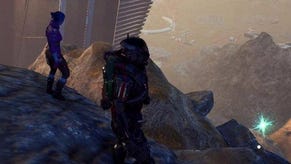How to actually enjoy Mass Effect: Andromeda
Play it again, SAM.
There's enjoyment to be gleaned from Mass Effect: Andromeda, but in order to discover it, you might need a guide. No, not SAM, your cranially implanted AI assistant. SAM is awful - a toneless bore who doubles as a cautionary tale about leaving work notifications active on your phone, forever bleating at you to mine things, scan things, check your email, take vidcalls and spend your Andromeda Viability Points. As the vehicle for much of Mass Effect: Andromeda's more tedious content, he makes a far more convincing nemesis than the story's actual villain, who at least puts you through a few decent firefights en route to some scenery-chewing monologues about racial supremacy.
You can't mute SAM, alas, but you can read this article (or watch the accompanying video) about what to focus on in BioWare's fourth Mass Effect, a game of obscene bloat, hilarious and/or maddening glitches and ghastly hoop-jump design that harbours a few worthwhile missions, nice views and a sparky, generous array of combat options. Onwards!
Put off the filler
To seriously appreciate Mass Effect: Andromeda you've basically got to become a minor sociopath, resilient against all entreaties for aid. Spotted somebody fidgeting on the periphery of a scene, casting their eyes heaven-ward and crying "woe is me"? Halt, adventurer! Don't ask them what the matter is, because they'll only tell you they've lost their geology A-level notes and before you know it, you'll be picking over limestone formations in some godforsaken crevasse.
You can carry on playing after finishing Andromeda's campaign to complete the majority of side missions, so feel free to ignore some of the bittier offerings (e.g. scan X busted power boxes, find X herbal specimens, recon uncharted worlds etc) on your first runthrough. Bear in mind, though, that certain missions like the quests to investigate the missing turian and asari arks will affect the endgame a little. Companion loyalty quests are, as far as I can tell, completable after the endgame too, though some are tethered to your progress through the main storyline.
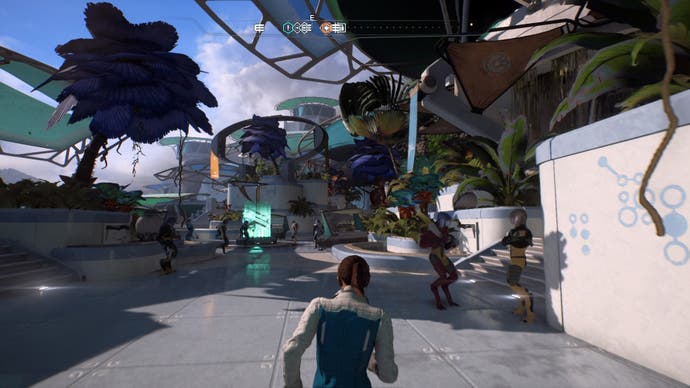
Do the Vault missions first on each planet
Most of the game's explorable planets features a Remnant Vault - a vast, buried labyrinth made up of simple switch-and-platform puzzles that houses a mighty terraforming machine, activation of which bumps up the planet's viability for settlement by a whopping 40 per cent. It's absolutely worth doing these before any other activities, because planets are more pleasant to navigate once terraformed - it means you can spend longer away from the Nomad in some areas without running out of life support, and there are fewer, annoying, performance-killing particle effects to worry about. Once you've terraformed a planet, you'll also be able to found a Nexus outpost with its own crop of missions.
Vaults are quite entertaining in themselves, if repetitive. To reveal the entrance, you'll need to visit three monoliths and complete some simple sudoku-style puzzles, scanning the environment for glyphs and plugging them into four-by-four grids (you can spend tokens gathered at smaller Remnant ruins to auto-complete these puzzles). Once you're in, it's all about using switches to raise platforms, unlock doors or erect defences such as energy bubbles that shield you from harm - gentle conundrums that accompany more taxing firefights against Remnant robots. There's a pinch of Halo's AI ecology to how the Remnant do battle - you'll encounter Assembler units that like to hide and build other units, and artillery-type enemies who dig in behind frontal shields.
Tweak the settings
One of the Andromeda's many inelegances is that conversations are sometimes inaudible because one participant is a dozen metres away, or even in a different room entirely. It's especially aggravating when you're trying to follow squad mate banter, so hit the Settings screen first thing and switch on subtitles. You might also want to set the game to always display objective markers on screen, because the world map can be a little opaque.

You don't have to craft...
If wading through turgid menus and weighing the merits of a +5 shield regen enhancement vs +4 tech area-of-effect numbs your imagination, fear not - there are plenty of gun parts, armour pieces, mods and consumables to pluck from bodies or treasure crates out in the world, including bespoke armour sets for the different species in the game, and some flashy N7 gear from the original trilogy. In general, if the critical path through a dungeon heads one way, always check around the corner in the other direction - there will, I pretty much guarantee you, be a treasure of some description. Likewise, if there's a low wall at the rear of a chamber with something mission-critical right in the centre, look behind that wall. This is a very predictably designed game.
...but crafting is cool
If you are in a lather at the thought of trading your Mark II Initiative Helmet for some sweet kett headgear, and you don't mind taking the time to gather raw materials, there's an absolute embarrassment of crafting options in Andromeda - three research trees for Milky Way, Helius Cluster and Remnant weapons and gear, plus gun mods you can apply (or remove) before each mission, and one-use augmentations that dramatically rework the item in question. This, for me, is where much of the satisfaction of the game is to be found - via judicious application of mods and augmentations, you can craft an assault rifle that fires wall-penetrating homing plasma darts, a shotgun whose pellets explode after impact, and chest armour that electrifies people who melee attack you. Remember to deconstruct (not sell) spare weapons or mods for crafting materials, and to free up precious inventory space.
You don't have to rotate your squad
No need to worry about keeping your sidekicks occupied - in Andromeda, characters level up even when not in the field, so everybody should be fighting fit by the endgame, providing you remember to allocate those skill points. Stick to the people whose company you enjoy - in my case, that would be either hard-nosed, soft-centred turian smuggler Vetra or Jaal, your stalwart angaran chum (characters don't always get along with each other, not that this affects the combat - pick Liam and PeeBee and you'll be treated to some tiresome grizzling about life priorities and putting the team first). If you're struggling in combat, I recommend bringing Cora - her biotic charge is rarely a match-winner but does at least tend to put her in the way of incoming fire, and her higher level abilities include some useful group buffs. You don't have any real control over comrades, but this way they can boost your chances indirectly.

Shortcut the resource-gathering
Every time you increase your Nexus level (a measure of your overall progress in settling Andromeda, mostly fed by carrying out missions on planets) you get a cryopod point to spend on thawing out Milky Way colonists for passive bonuses. Prioritise the ones that lead to regular deliveries of crafting materials, credits and so on - you'll have less gathering to do out in the field. On the other hand, to gain Nexus levels you'll need to grind side missions to earn Andromeda points, and some cryopod unlocks are tethered to how many planet-specific quests you've completed, so there's drudgery involved either way. Don't forget to pick the cryopod option that raises your inventory cap, too.
Prioritise the best planets
The shimmering ice world of Voeld is glorious to behold, distinguished by a massive kett cruiser bolted to a mountain at the map's centre, and features one of the game's better story missions. But as generic as it may appear, desert beauty-spot Elaaden is probably the pick - it's home to a mission involving a gigantic sandworm creature, a massive Remnant derelict that calls to mind that of Ridley Scott's Alien, and a vertiginous krogan colony where you'll come across some of the more amusing incidental writing. Elaaden is also more visually varied than it seems at first glance, mixing towering sandstone structures with rolling, wreckage-laden dunes and fungal grottos, and the game's armour textures look lovely in the heat and dust.
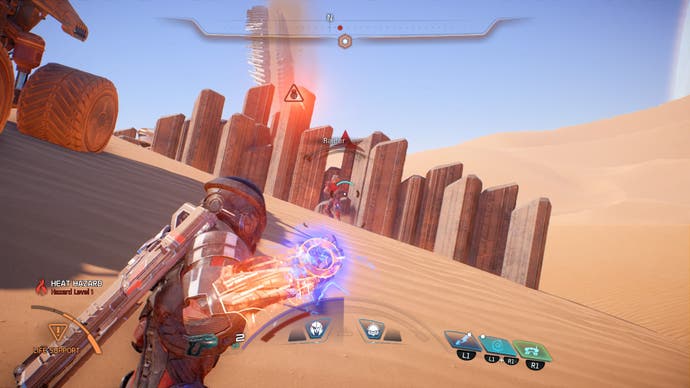
Dress to survive, not impress
One of Andromeda's annoying inconsistencies is that while you can revive squad mates, they can't return the favour - a pain in the gonads indeed during later Remnant Vault escapades that disallow manual saves, where you'll be steadily lasered to a crisp if you stray out of cover. For minimal frustration, go large on gear that keeps you upright and intact, rather than boosting your powers. Remnant Heritage armour in particular is resource-intensive - it requires large amounts of uranium, a scarcer commodity - but worth the trouble for its sizeable buffs to your shield regeneration and damage resistance. By the endgame I was able to tank multiple grenade blasts, all thanks to good old Remnant knowhow. Remember to plug a few points into skilltrees that increase your sturdiness, too, like Barrier or Combat Fitness.




